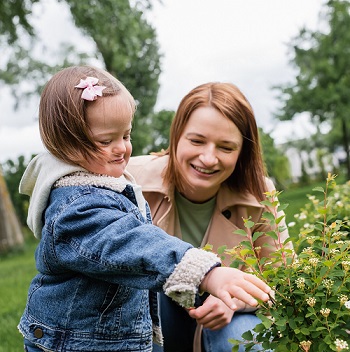AEPS®-3 Assessment Activities: Your Guide to a Valuable Resource

If you’re a user of AEPS®, you know that linking assessment, goal setting, intervention and teaching, and progress monitoring makes it easier to nurture school readiness in young children. But there’s an AEPS resource that you might not be familiar with that can help streamline assessment and progress monitoring: AEPS®-3 Assessment Activities.
The assessment activities that were available in the previous edition of AEPS only as part of the AEPSi online system have been updated for AEPS-3 and are included in the printed materials for the first time. Divided into 10 naturalistic activities for home-based assessment and 10 for center-based assessment, each activity comes with a description, suggested materials and guidelines for administration, a list of targeted AEPS-3 Test items, and an easy-to-use data collection form. (See a sample AEPS-3 Assessment Activity here.)
What can these assessment activities do for your program, and how can you make them a part of your routines? Learn more in this article, and get two sample activities: one home-based and one center-based.
How the Assessment Activities Help
The AEPS-3 Assessment Activities are designed to make your assessment process more effective and efficient by helping you:
- Embed AEPS-3 Test items into typical home and classroom routines. The semi-structured nature of the AEPS-3 Assessment Activities means they can be easily integrated into existing routines and modified so that children of all abilities can participate. All you need is for one or more team or family members to engage with the child or children in an activity. It can be helpful to have a second team member observe and score their performance but it is not necessary.
- Elicit skills from all eight developmental areas assessed by the AEPS-3 Test. Administering an assessment as comprehensive as the AEPS-3 Test to every child you serve can be time-intensive, but using the assessment activities can save you significant time by simultaneously targeting skills from up to four key developmental areas. When you complete a full set of 10 center- or home-based assessment activities, you cover every item on the AEPS-3 Test!
- Assess multiple children at the same time. Because the center-based AEPS-3 Assessment Activities can be integrated seamlessly into your usual routines, you can increase efficiency by doing group assessments of up to five children. (The home-based assessment activities are primarily used to test a single child across areas of development, but they also can be used to simultaneously assess multiple children.) Some programs assess groups of children by setting up activity stations for small groups to rotate through, while others set up a different assessment activity each day and rotate groups until all children have completed the activity. Discuss the best fit for your program’s schedule with your team members.
- Collect authentic data. The AEPS-3 Assessment Activities are designed to save time, make the most of your resources, and ensure that the developmental data you gather is authentic and valid. Assessment results provide a detailed portrait of each child’s strengths and allow your team to observe trends or patterns within groups of children.
- Get families involved in their child’s development. Because consistent family engagement is crucial to supporting development, parents and caregivers should be given every opportunity to participate in the AEPS-3 assessment process. A family member might interact with their child and work to elicit targeted behaviors during the administration of the assessment activities, or they might provide key information to help with scoring, summarizing, and interpreting AEPS-3 Test items that might be difficult to observe.
- Help identify possible delays sooner. By streamlining the assessment process, the activities help identify children with delays in a more timely manner, so they can be connected with appropriate supports and interventions as early as possible.
Implementation Guidelines
NEW IN AUGUST: The new AEPSi system will include AEPS-3 Assessment Activities, allowing users to optimize the assessment process by entering each child’s scores directly into the web-based management system. (Not an AEPSi subscriber yet? Learn more about its benefits here.)
Here are a few practical guidelines to follow when using the AEPS-3 Assessment Activities:
- Pick the right activities. Be sure to select AEPS-3 Assessment Activities that specifically target the areas of development you want to assess. Activities don’t have to be completed in any particular order, so you can customize the sequence of each set (both home- and center-based) to suit your program’s time and resource availability, as well as children’s interests and developmental level.
- Plan ahead. Decide beforehand how you want to observe and score the assessment activities. Options include observing the activity live (or over video conferencing) and entering results on the assessment activity data collection form; videotaping the session and scoring the child’s or children’s performance later; or taking notes during the activity and then recording results after follow-up discussions with other team and family members.
- Modify if necessary. Look over the space where the activity will take place to make sure the physical environment is suitable and accessible to all learners. Review all assessment activities in the set and think about which modifications or supports or might be necessary for cultural responsiveness or to accommodate young children with disabilities.
- Start slow. Although AEPS-3 Assessment Activities allow you to evaluate one child across multiple developmental areas or assess more than one child at a time, beginning users are advised to start by focusing on just one child and one area of development. Once staff members have gained more confidence in the scoring and observation process, they can begin to assess small groups of children or more than one developmental area simultaneously.
- Stick to the routine. AEPS-3 Assessment Activities should be administered in familiar situations, using common toys and objects that children see and interact with every day. This helps ensure that children are at ease and more likely to exhibit typical behaviors.
Activity Examples: Outdoor Play and Store
To give you a better feel for how AEPS-3 Assessment Activities can be blended into a program or family’s existing schedule, let’s take a look at the description, suggested materials and procedures, and targeted skill areas for one home-based assessment activity and one center-based assessment activity.
 Home-Based Assessment Activity: Outdoor Play
Home-Based Assessment Activity: Outdoor Play
Targeted AEPS-3 Test Areas: Gross Motor, Social-Emotional, Social-Communication, Cognitive
Description
Young children love exploring the outside world, and they usually engage in many outdoor play activities at home. Whether child- or adult-directed, outdoor play activities—like playing in a sandbox or imaginary play involving animals, scientists, or explorers—offer great opportunities to assess several AEPS-3 Test areas, including gross motor and social-communication skills. Outdoor games are well-suited for assessing groups of children because it’s easy for your team to observe how well children follow rules, run, jump, and play with balls.
Suggested Materials
It is important to note that no special materials are required, just those readily available in nature or the average backyard (i.e., plants, insects, stones, leaves, balls, etc.)
Suggested Procedures
- Encourage the child to use their senses to explore nature (smell flowers, touch rocks or leaves, etc.) and describe what they are experiencing.
- Suggest an imaginary play scenario for the child. They could be an animal or adventurer exploring a forest, farm, or jungle. Use props to help!
- Elicit targeted AEPS-3 Test items by encouraging the child to:
- Explore the environment
- Make simple observations (“A bucket of leaves weighs less than a bucket of sand”)
- Build on observations and explorations through further inquiry
- Experiment
- Generate and test hypotheses (“If I throw a leaf and a rock with the same force, which one will go farther?”)
- Explain their understanding of different phenomena
- Predict the outcome of their investigations
- Draw plausible conclusions about events beyond their personal experience
 Center-Based Assessment Activity: Store
Center-Based Assessment Activity: Store
Targeted AEPS-3 Test Areas: Math
Description
Every center-based program has a wide variety of items (pens, erasers, etc.) that you can use to evaluate young children’s math skills. The Store assessment activity offers the chance for your team to observe children counting items, reciting numbers, reading and writing numerals, or practicing subtraction.
Suggested Materials
- Pens
- Erasers
- Notebooks
- Paper tablets
- Rulers
- Other easy-to-count school items
Suggested Procedures
- Explain to the child or children that they will be playing store using items from the classroom, taking turns as the buyer and seller. The child playing the buyer could hand a list of items to the seller, and the seller could count them out.
- Write the price of an item on a piece of paper and then ask the child to say the amount.
- Have a child play the role of the person who prepares the order. Hand the child an envelope with the number of items to prepare, and have them count the number of items and write the number on the paper to place the order.
Get a download of this assessment activity
With the AEPS-3 Assessment Activities, your program can conduct assessment and progress monitoring in less time, with better results. For a more in-depth look at how to use AEPS-3 Assessment Activities, including a sample page from a data collection form, download this free excerpt from AEPS-3 Assessment Volume 2.

